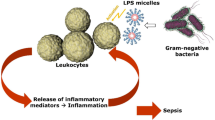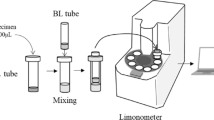Abstract
A panel of 5 different breast-cancer and 2 other cancer extracts was used to clarify the false-negative responses in patients with Stage I and II breast cancer and the false-positive responses in control subjects. Most patients with Stage I and II breast cancer who had an initially negative LAI response were positive when tested against the panel. The false negatives occurred because of (1) the experimental errors of the assay, (2) changes in the antigenic strength of the extracts, (3) antigenic heterogeneity of a few tumours and (4) lack of tumour-specific reactivity of the host. 3% of control subjects had a false-positive LAI response. The leucocytes from most of these positive patients did not react to the panel of antigens, and hence the false positives appeared to result from experimental error. In-hospital patients with benign breast disease had a 12% positivity rate when initially assayed, and 63% of these patients reacted to the panel of breast-cancer antigens. Those patients with benign breast disease who reacted to the panel of breast-cancer antigens had cytophilic anti-breast-cancer antibody in their serum, their leucocyte LAI reactivity was blocked in an immunologically specific manner by serum from advanced Stage IV breast-cancer patients, their leucocytes reacted to extracts of breast cancer and not fibrocystic breast tissue, their leucocyte reactivity was blocked by isolated breast-cancer TSA that was linked to beta 2 microglobulin, but not by normal breast-tissue proteins, and the kinetics of the LAI response after excision of the breast mass was identical to that observed with breast-cancer patients after mastectomy. In these patients, the breast tissue within the breast lump expressed breast TSA similar to unequivocal breast cancer.
This is a preview of subscription content, access via your institution
Access options
Subscribe to this journal
Receive 24 print issues and online access
$259.00 per year
only $10.79 per issue
Buy this article
- Purchase on Springer Link
- Instant access to full article PDF
Prices may be subject to local taxes which are calculated during checkout
Similar content being viewed by others
Rights and permissions
About this article
Cite this article
O'Connor, R., MacFarlane, J., Murray, D. et al. A study of false positive and negative responses in the tube leucocyte adherence inhibition (tube LAI) assay. Br J Cancer 38, 674–684 (1978). https://doi.org/10.1038/bjc.1978.272
Issue Date:
DOI: https://doi.org/10.1038/bjc.1978.272
This article is cited by
-
The application of leukocyte adherence inhibition assay to patients with colorectal cancer
Diseases of the Colon & Rectum (1989)



